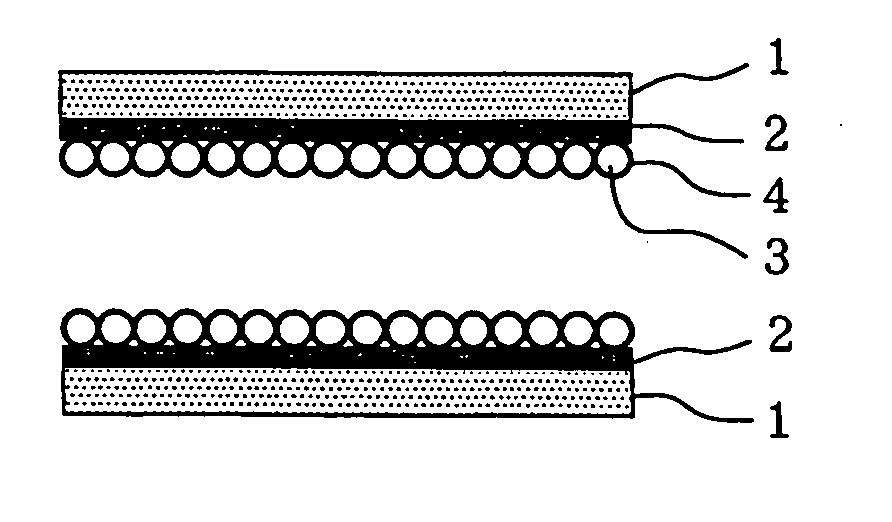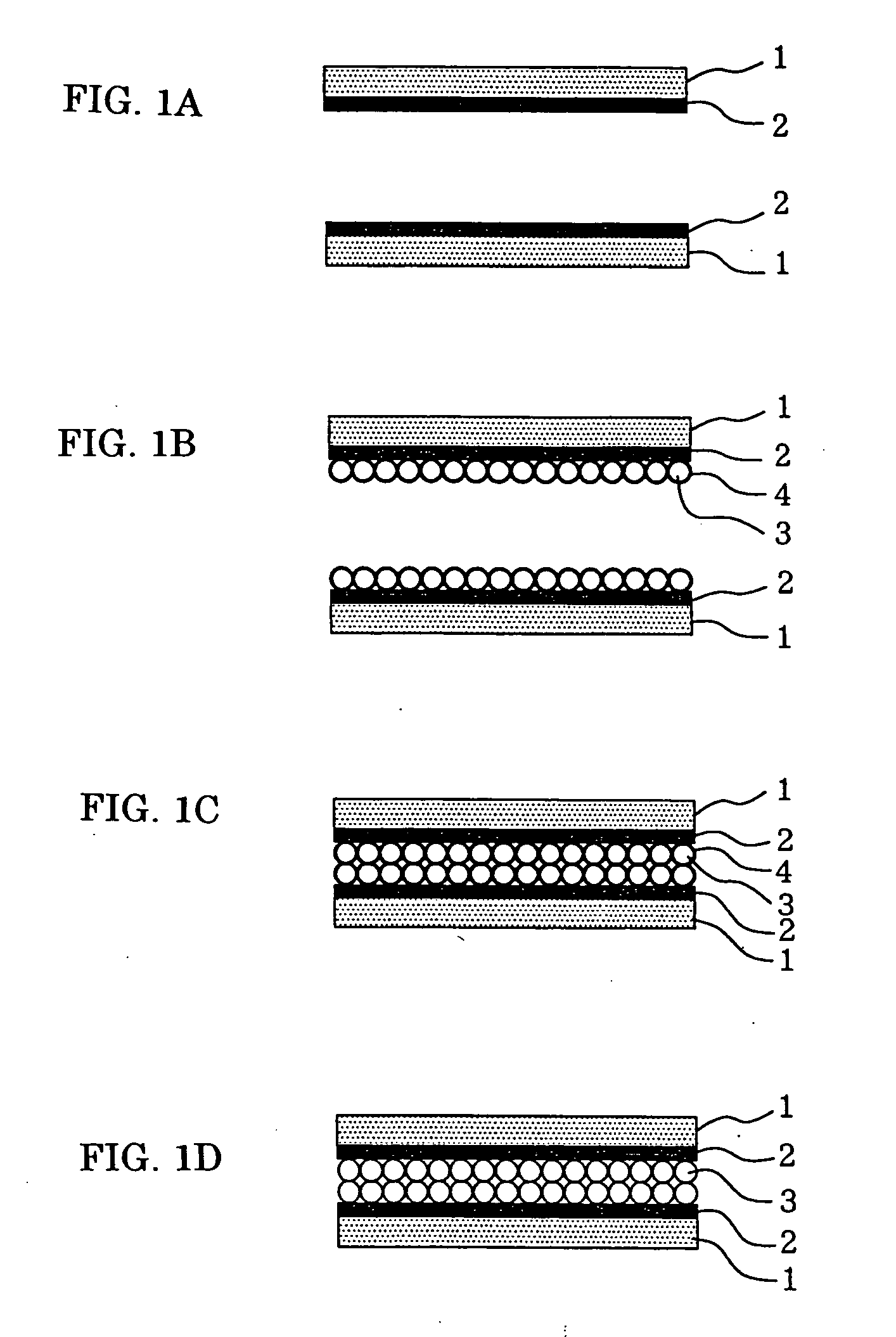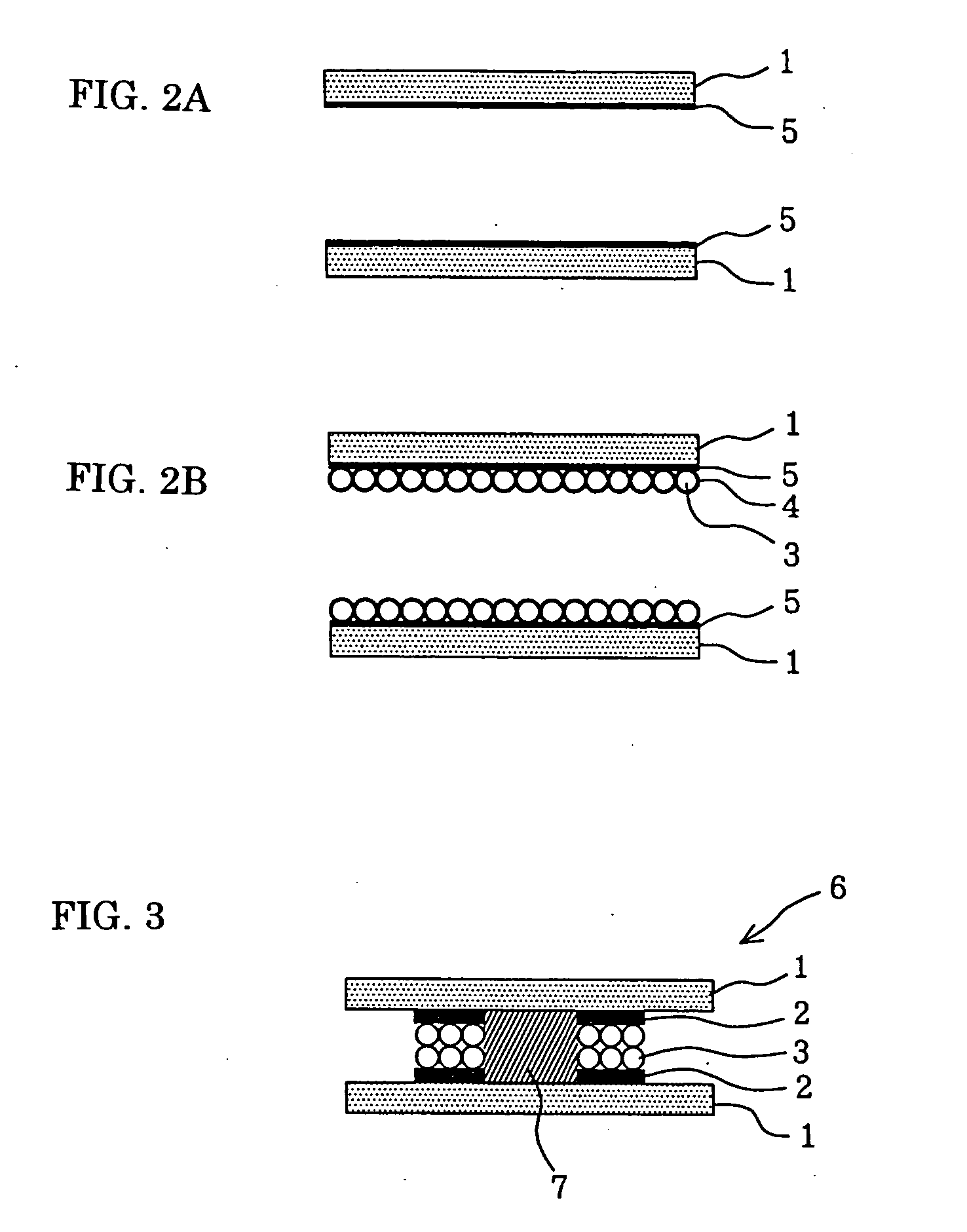Bonding structure and method for bonding members
- Summary
- Abstract
- Description
- Claims
- Application Information
AI Technical Summary
Benefits of technology
Problems solved by technology
Method used
Image
Examples
first embodiment
[0060]FIGS. 1A to 1D are schematic longitudinal sectional views showing the bonding steps of a method for bonding members according to a first embodiment of the present invention. Two members are bonded in FIGS. 1A to 1D, though this method may also be applied to the bonding of three or more members, for example the bonding of semiconductor devices to a substrate.
[0061] Referring to FIG. 1A, a receiving layer 2 is formed on each of two members 1. Examples of the material for the members 1 include metals, glass, synthetic resins, and semiconductors; substantially any solid may be used for the members 1 in the bonding structure and method of this embodiment. The members 1, which are flat in FIGS. 1A to 1D, may have a different shape. In addition, the two members 1 may be made of different materials, and may have, for example, wiring disposed thereon.
[0062] Typical examples of the material for the receiving layer 2 include polyamic acids, acrylic resin, alumina hydrate, calcium carbo...
second embodiment
[0075]FIGS. 2A and 2B are schematic longitudinal sectional views showing the bonding steps of a method for bonding members according to a second embodiment of the present invention. In the second embodiment, a receiving structure 5 for holding the nanoparticles 3 is formed on the members 1 instead of the receiving layer 2 in the first embodiment. In the second embodiment, the bonding steps in FIGS. 1A and 1B in the first embodiment are replaced by those in FIGS. 2A and 2B, and the subsequent bonding steps are the same as those in FIGS. 1C and 1D. The other features of the second embodiment are the same as those of the first embodiment. In the following description, the same parts as in the first embodiment are indicated by the same reference numerals.
[0076] Referring to FIG. 2A, the receiving structure 5 is formed on each of the two members 1. Examples of the material for the members 1 include metals, glass, synthetic resins, and semiconductors; substantially any solid may be used ...
third embodiment
[0081]FIG. 3 shows an example of a product having a bonding structure according to a third embodiment of the present invention. Referring to FIG. 3, a liquid crystal panel 6 includes the members 1 bonded by the bonding method according to the first embodiment. As in FIG. 3, for example, the bonding structures according to the first and second embodiments of the present invention may be applied to a sealing structure for sealing a liquid crystal 7 in the liquid crystal panel 6.
PUM
| Property | Measurement | Unit |
|---|---|---|
| Structure | aaaaa | aaaaa |
Abstract
Description
Claims
Application Information
 Login to View More
Login to View More - R&D
- Intellectual Property
- Life Sciences
- Materials
- Tech Scout
- Unparalleled Data Quality
- Higher Quality Content
- 60% Fewer Hallucinations
Browse by: Latest US Patents, China's latest patents, Technical Efficacy Thesaurus, Application Domain, Technology Topic, Popular Technical Reports.
© 2025 PatSnap. All rights reserved.Legal|Privacy policy|Modern Slavery Act Transparency Statement|Sitemap|About US| Contact US: help@patsnap.com



